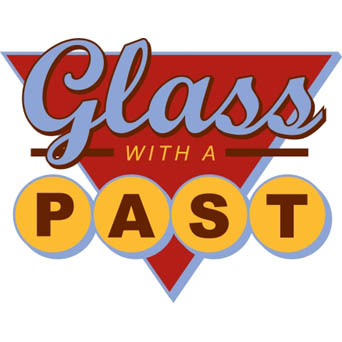Q & A Mondays are answers to reader questions submitted via email or social media. All personal information has been removed for privacy reasons and messages have been edited for clarity. You may submit your own questions through the About/Contact page.
Q: I have been given a heap of boro glassware from a local school laboratory. Do you know whether it can be fused?
A: Hi there; I don’t have a lot of experience with boro, I’m messed around with some test tubes though. You can find an annealing point for boro with a little googling, I was able to tack fuse the test tubes together at about 1535, so I know you can at least get that far. They might make for some interesting partially slumped items too. What a cool thing to play with, let me know how things turn out.
Q: I am really, really, really interested in glass art; slumping and fusing to be exact. Anyhew, I am wondering if an oven can be transformed somehow to make it like a kiln? I’ve got room for an oven n the garage and I can get one for nothing, but there’s no sense if it can’t be used. I found your website earlier today and you seem to know what you’re talking about so I thought I’d ask your opinion and would greatly appreciate your input. Have a great day!
A: As far as I know, an oven can not be adapted to be a kiln. The temperatures required are way too high. You can check into a microwave kiln, which is somewhat less expensive, but is also limited by size, and you can’t use molds in it, so fusing only. (I’ve never used one, so I have no insight here) Alternatively, there are tutorials about building your own kiln from scratch, which might be an option for you if you are handy.
Q: Hi Jodi; I have been fusing with float glass for a short while, following your tutorials and others like Glass Campus. I have followed GC advice to fuse tin side up to avoid devit but some other posts recommend tin side down when fusing. ALso if painting do it on the air side. In that case, if tin side is up you would have to paint in reverse. So I’m con-fuse-d . Is it tin side up or down to fuse?
A: Hi there; I’ve always heard that the tin side should be towards the shelf, or in between layers. I have had some interesting paint/tin side reactions when painting on the tin side. If you aren’t into unpredictable, I’d paint on the air side. Hope that helps! J.
Q1: I have a bottle that I have Fired….it was green when it went in and white when it came out. I’ve noticed some scratches in the white….can I add 96coe grit over and fire?? Or Should I make frit out of green bottle glass??
A: Hi there; it sounds like the bottle was painted green rather than solid green glass. if the end goal is to make the bottle green again, you’ll need to use a fusible glass paint that is compatible with all glass types, or Armstrong Fusible 82 frit or Thompson Enamels for float glass. Both of these products are made for window glass but work on bottle glass.
96 frit is not compatible at all with bottle glass, not even in small amounts. Using a second bottle to make frit without testing for compatibility is also not a super great plan as bottle manufacturer’s formulas vary quite a bit.
Q2: Thanks Jodi…..the goal is to cover the scratches….I’ll look for the Frit or enamel paint….I can keep most of the bottle white.
A: I’ve used the Thompson enamel over painted labels on bottles before to make the label shiny again, the advantage is that it fires at a lower temperature, so you don’t have to risk devit. I quite like the sample set, 62 colors for not a lot of money.
https://thompsonenamel.com/product/samp-e-complete-medium-tempature-low-expansion-enamels-62-colors/

